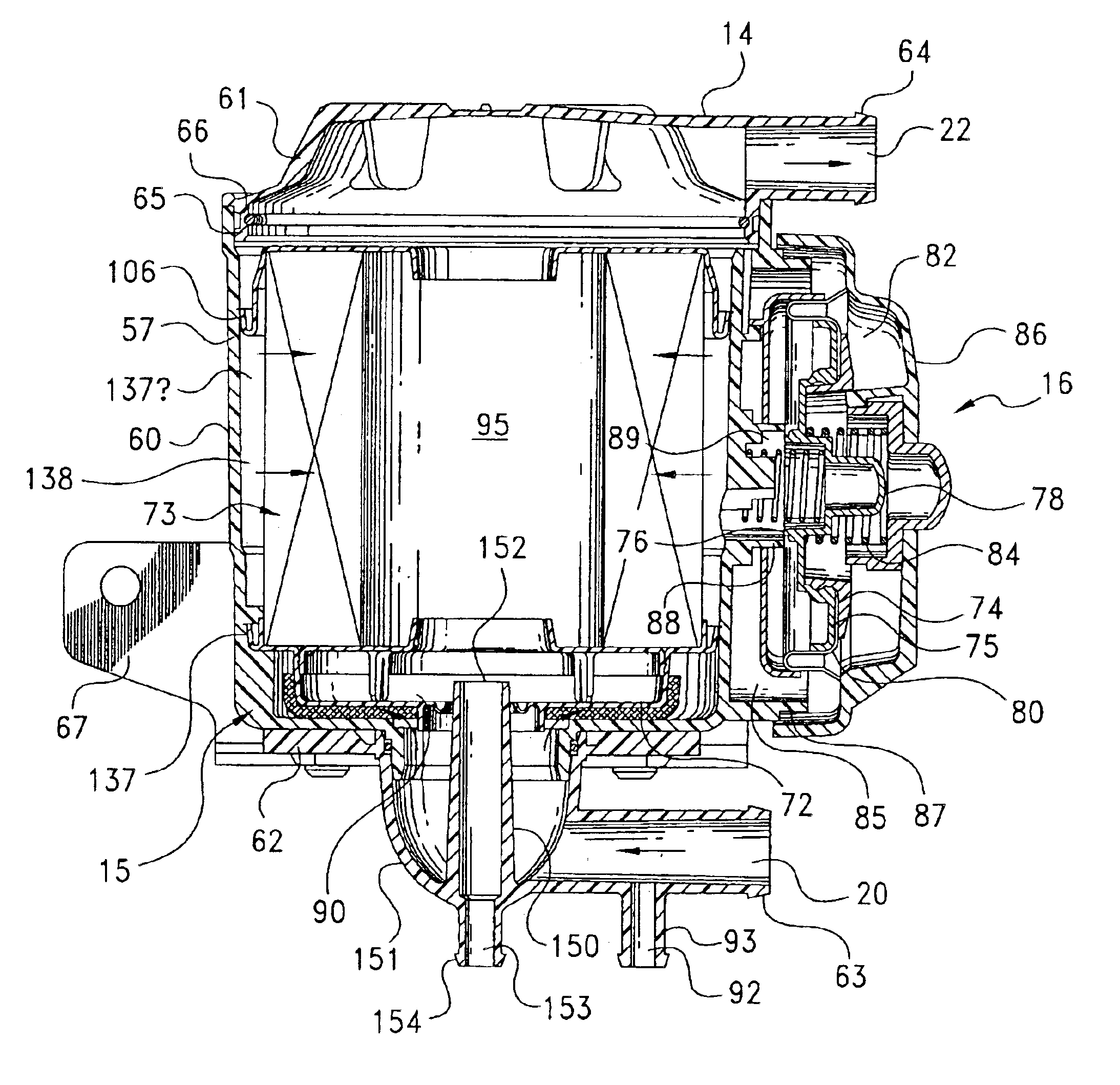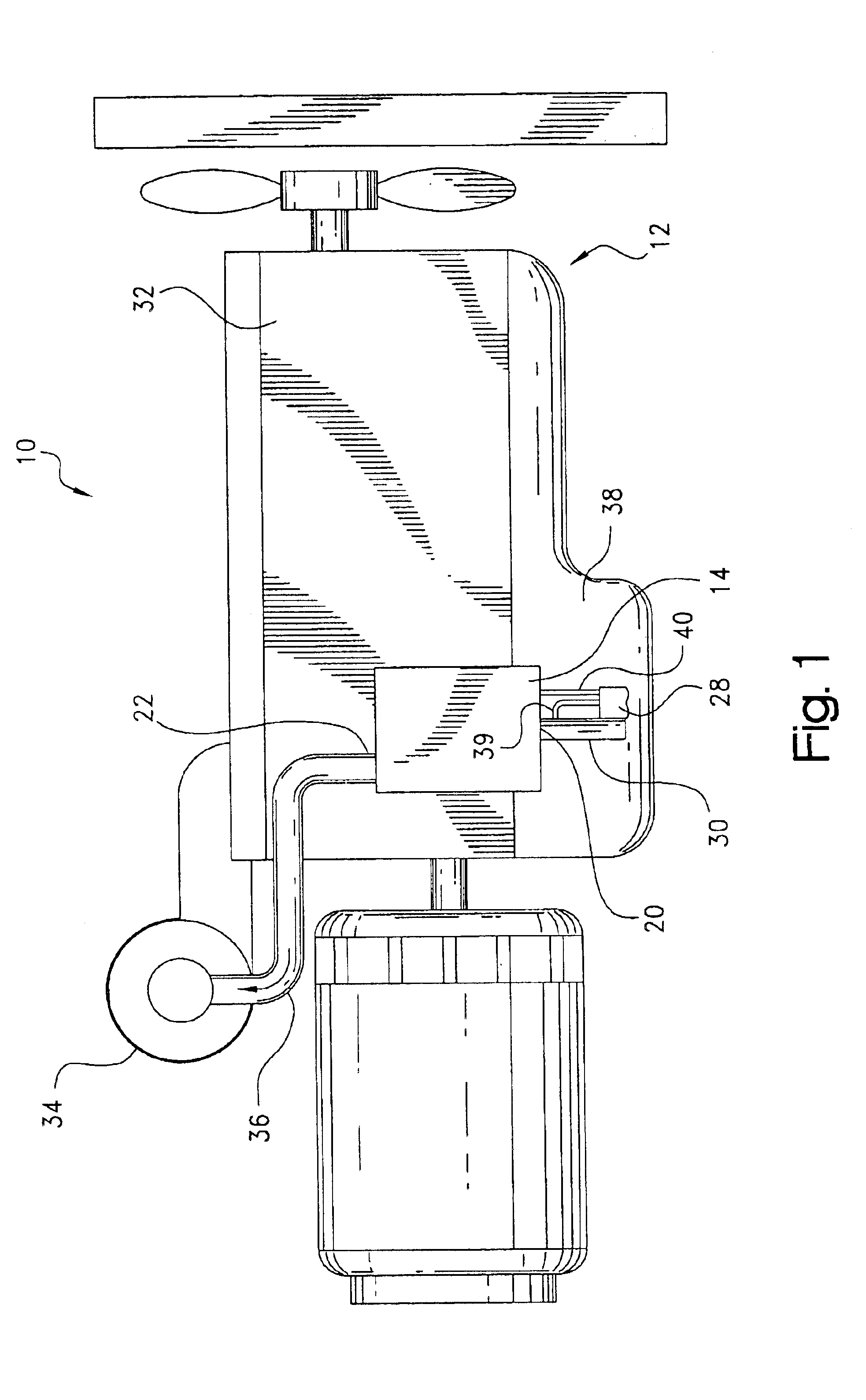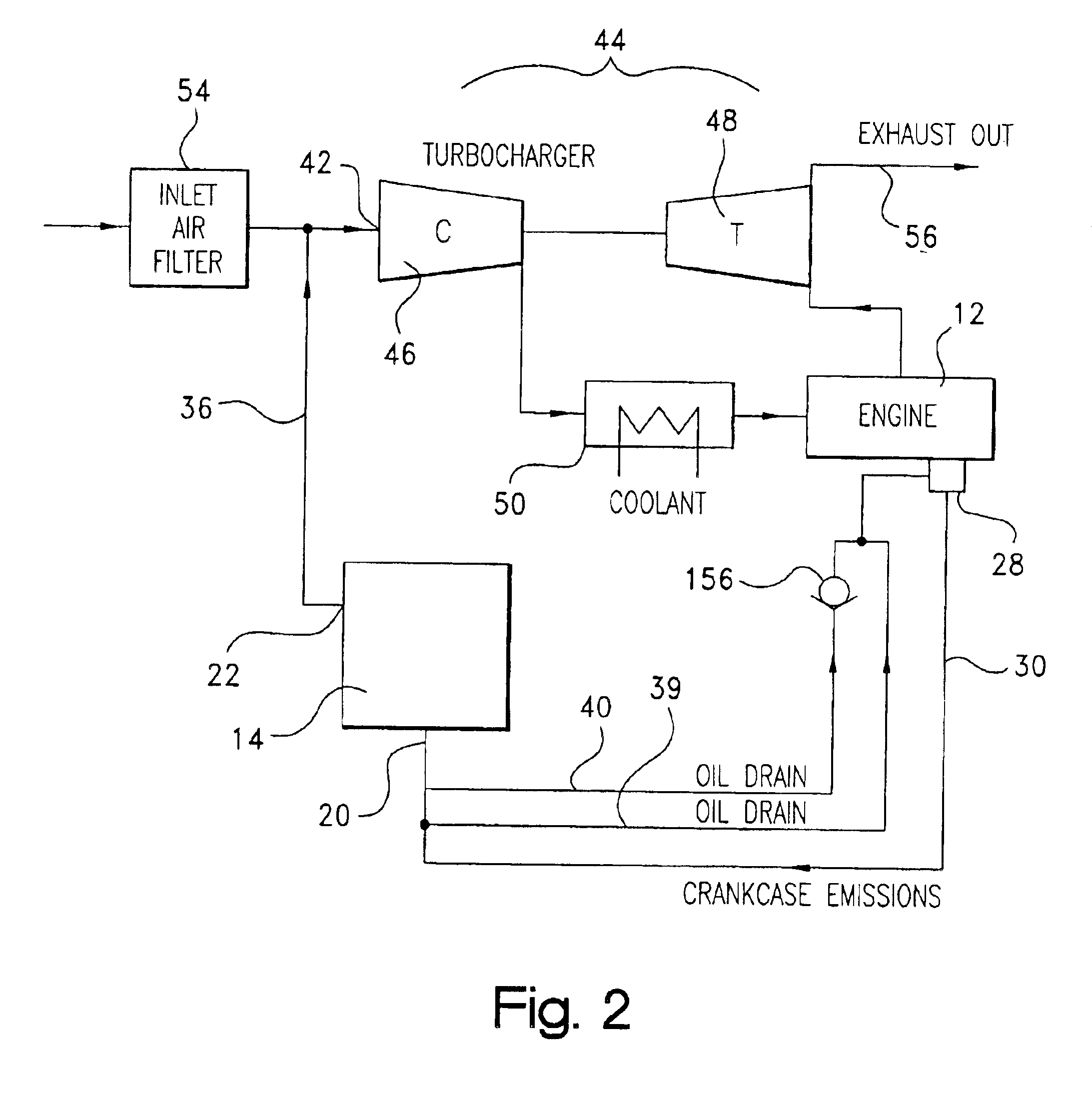Filter element and assembly with continuous drain
- Summary
- Abstract
- Description
- Claims
- Application Information
AI Technical Summary
Benefits of technology
Problems solved by technology
Method used
Image
Examples
Embodiment Construction
[0034]Referring to the drawings, and initially to FIG. 1, a closed crankcase emission control system is indicated generally at 10. The system includes an internal combustion engine, indicated generally at 12, and an integrated crankcase emission control assembly 14. The integrated crankcase emission control assembly 14 includes a filter assembly, indicated generally at 15, and preferably a pressure regulator, indicated generally at 16, as will be described below.
[0035]The crankcase emission control assembly 14 has a gas inlet 20 and a gas outlet 22. The gas inlet 20 is connected to the engine crankcase breather 28 via an inlet hose 30 and receives contaminated oily gas from the engine crankcase 32. The crankcase emission control assembly 14 separates the contaminated oily gas, agglomerates small particulates to form larger particulates, and filters the large particulates.
[0036]The cleaned crankcase emissions exit from the gas outlet 22 and enter the engine air intake 34 for combusti...
PUM
| Property | Measurement | Unit |
|---|---|---|
| Diameter | aaaaa | aaaaa |
Abstract
Description
Claims
Application Information
 Login to View More
Login to View More - R&D
- Intellectual Property
- Life Sciences
- Materials
- Tech Scout
- Unparalleled Data Quality
- Higher Quality Content
- 60% Fewer Hallucinations
Browse by: Latest US Patents, China's latest patents, Technical Efficacy Thesaurus, Application Domain, Technology Topic, Popular Technical Reports.
© 2025 PatSnap. All rights reserved.Legal|Privacy policy|Modern Slavery Act Transparency Statement|Sitemap|About US| Contact US: help@patsnap.com



